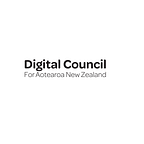Using the digital dilemmas of COVID 19 to inform design
#weeknotes (22)
Kia ora koutou — we are the Digital Council for Aotearoa New Zealand. We are looking forward to sharing our mahi (work) here with you. In keeping with the #weeknotes approach, we want to be transparent about our work. Plus, we are looking for input from people from all walks of life to inform our advice to the New Zealand Government on harnessing the potential of digital and data to make Aotearoa New Zealand a great place for all.
In these #Weeknotes we explore the digital dilemmas experienced by Pacific households and businesses in Aotearoa throughout COVID-19. We look at how these dilemmas inform the design, effort and investment of government and private sectors in ways that will grow everyone.
The digital experiences of Pacific peoples were on our minds after last week’s focus groups with Pacific youth. This week we were further challenged by two Pacific leaders. Kirk Mariner has just left the Department of Internal Affairs after five years working on the government’s digital inclusion work programme. Beatrice Faumuinā is Strategic Relationship Manager at Pacific Business Trust (PBT) which supports business growth and success in the Pacific community.
What we heard — the digital dilemmas for Pacific households in Aotearoa
Digital dilemmas are embedded in the social dilemmas that emerged throughout the COVID-19 experience. Communities rallied to increase access to online platforms. Those platforms were harnessed to connect, to learn, to stay well, to do business. At the same time, inequities and issues of trust and privacy were heightened. As Beatrice noted, the shift to digital platforms worked for some, but not all.
Schools and community groups scrambled to deliver devices to households. Telcos lifted data caps. Those caps soon came back on. Not all households knew how to use the devices that arrived home, or could afford the data fees for accessing them. Beatrice noted that, with everyone being at home during lockdown, costs increased. Not only data, but electricity and water. How do households prioritise which cost is the one they look after?
What we heard — the digital dilemmas for Pacific businesses in Aotearoa
Similarly on the business front, PBT experienced that some were quick to adopt PBT’s online workshops. Others had no data or hardware.
Some SMEs looked to operate online but were concerned about having personal information online. Personal information is sacred. Businesses were worried about being hacked. Others didn’t know which social media channel was the right way to go. There was a lack of digital marketers to advise them.
For those who had no digital presence, it meant no cash flow. So they looked to pool resources and develop a digital business model. Without subsidies, some still struggled with data and hardware.
What we’re seeing — space for brokering, building and cultivating
Both Kirk and Beatrice pointed us to people and places that are growing the capabilities of Pacific peoples in the digital space. The Southern Initiative is one of those we also talked with this week.
There is a clear opportunity to broker places, spaces, opportunities to grow the talent, passion, and inherent creativity and innovation that is emerging through Generation Z, Māori and Pacific peoples. Those succeeding in this space need exposure and opportunities to bring others with them. As Kirk says, stop consulting and start building those pathways. And Beatrice adds, not traditional hierarchical pathways, but unstructured, organic opportunities for young people to access networks, programmes and platforms formally and informally in their everyday lives.
What we’re thinking — how these digital dilemmas inform design
Which brings to mind the principles of universal design commonly seen in our everyday lives through architecture and more recently in education. If you design for the people who have been excluded by traditional design and you’ll end up designing products and services that work for everyone.
A ramp will make access possible for wheelchair users and people with walkers. A ramp is natural and effortless for couriers delivering supplies, parents with pushchairs, people on crutches, people with knee or hip problems, people arriving on bikes, scooters and skateboards.
It’s time we started designing from the edges instead of designing for a non-existent average that makes everyone invisible.
- What [digital] ramps cultivate innovators that are grounded confidently in their identities?
- What [digital] ramps build trust and ethical behaviours that hold data as sacred and sovereign?
- What [digital] ramps can address access to data and hardware?
- What [digital] ramps make the invisible visible?
- What [digital] ramps grow communities that are confident, connected and well cared for?
It’s time the government and the private sector committed to intentional investment in these ramps — digital or otherwise — through properly connected and coherent policy, design, resource allocation and recruitment of people. As Kirk would say, it’s time for Aotearoa to grow its “digital moral fibre”. But that’s a thought for another day…look out for Kirk’s blog later on in the week.
ACTIVITY SUMMARY
To help identify the digital ramps we’ve just talked about, we’re now in the middle of an intense period of focus groups surfacing the experiences, aspirations, hopes and challenges around digital and data driven technology. This week we’re in Christchurch workshopping with VOYCE Whakarongo Mai, and youth, women and leaders from ethnic communities. In the following weeks we will be having further focus groups with youth, Māori, refugee communities, BLENNZ, and taxi drivers.
We’re also continuing conversations around E-Commerce and Digital Marketplaces and will be talking with industry representatives from New Zealand’s supply chain and logistics sector.
About our work: Council members come together monthly to make key decisions and progress our work programme. Between formal meetings, members focus on various work streams. Colin Gavaghan and Marianne Elliott lead our research work, Kendall Flutey and Roger Dennis our ad-hoc work, and Rachel Kelly and Nikora Ngaropo lead our comms, while our chair, Mitchell Pham, holds responsibility for stakeholder engagement.
